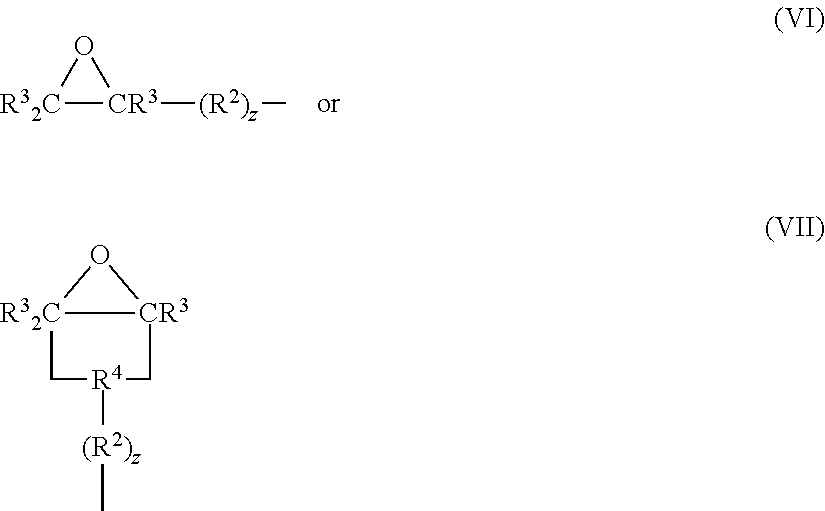Method for coating proppants
a technology of proppants and coatings, which is applied in the direction of coatings, chemistry apparatuses and processes, and wellbore/well accessories, etc., can solve the problems of reducing the oil or gas production rate, brittle coatings or uncoated proppants currently available, and not having the necessary compressive strength, etc., to achieve smoother and shinier surfaces, less cost of production, and improved leveling properties in coating processes
- Summary
- Abstract
- Description
- Claims
- Application Information
AI Technical Summary
Benefits of technology
Problems solved by technology
Method used
Image
Examples
example 1
[0128]A glass flask was purged with nitrogen, charged with 475 g of novolak “Resin 14772” (Plastics Engineering Company, Sheboygan, USA) and purged with nitrogen once again. The material was melted at 130° C. Then a stirrer was switched on at 420 rpm. 25 g of silicone oil 1 (an α,ω-functional silicone oil having about 10-18 Si—O units and terminal hydroxypropyl groups; dynamic viscosity at 25° C., Brookfield, 10-60 mPa·s) and 5 g of oxalic acid were added, and then the mixture was stirred under reflux at 420 rpm initially at 130° C. for 1 h. Then the mixture was heated to 180° C. within 2 h, and condensate that occurred was removed. This was followed by distillation at 180° C. for a further 30 min. The liquid material is poured hot onto a PTFE film. After cooling, the solid material is mechanically comminuted and hence a granular material is produced.
example 2
[0129]By the method of example 1, 25 g of silicone oil 2 (an α,ω-functional silicone oil having about 40-60 Si—O units and terminal 4-hydroxy-3-methoxyphenylpropyl groups; kinematic viscosity to DIN 51562 at 25° C.: 80-130 mPa·s) rather than silicone oil 1 were incorporated and a granular material was produced.
example 3
[0130]By the process of example 1, 25 g of SIPELL® RE 63 F (a polydimethylsiloxane with glycidoxypropylmethylsiloxy units and about 100-160 Si—O units; dynamic viscosity at 25° C. about 300 mPa·s; to be sourced from Wacker Chemie AG, Munich) rather than silicone oil 1 were incorporated and a granular material was produced.
PUM
| Property | Measurement | Unit |
|---|---|---|
| temperature | aaaaa | aaaaa |
| temperature | aaaaa | aaaaa |
| weight | aaaaa | aaaaa |
Abstract
Description
Claims
Application Information
 Login to View More
Login to View More - R&D
- Intellectual Property
- Life Sciences
- Materials
- Tech Scout
- Unparalleled Data Quality
- Higher Quality Content
- 60% Fewer Hallucinations
Browse by: Latest US Patents, China's latest patents, Technical Efficacy Thesaurus, Application Domain, Technology Topic, Popular Technical Reports.
© 2025 PatSnap. All rights reserved.Legal|Privacy policy|Modern Slavery Act Transparency Statement|Sitemap|About US| Contact US: help@patsnap.com

